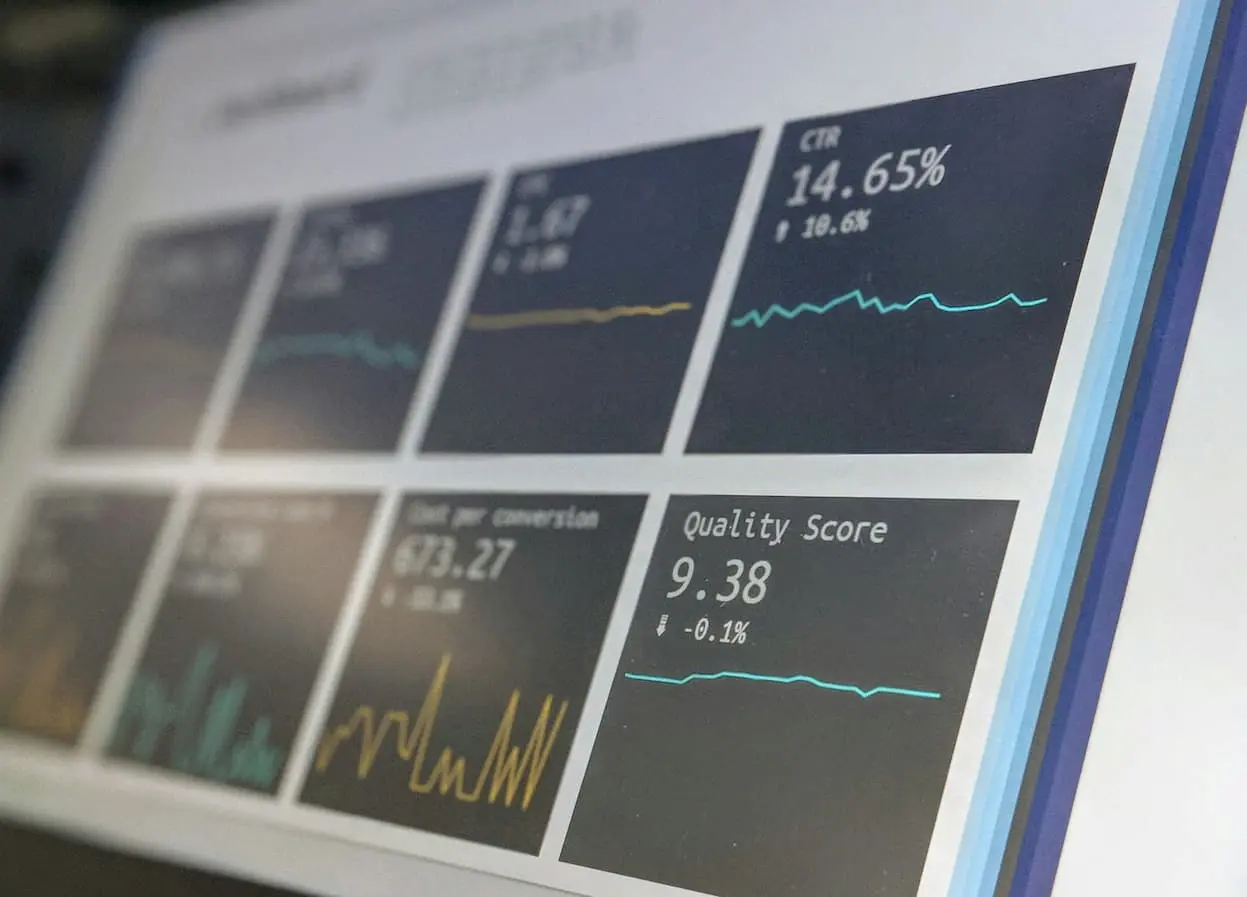What is Traffic Impact Assessment?

Introduction
Every developing city has one certainty — traffic. As cities expand and develop, they grow and so does the demand for infrastructure.
Housing estates, shopping malls, hospitals, schools, universities, and even
stadiums are built to accommodate people. But with every new development, there
is always that crucial question that has to be asked:
How will this scheme affect local traffic, road safety, and the transport network as a whole?
The answer lies in a process called Traffic Impact Assessment or TIA. This is not a technical report full of figures and graphs. Rather, it is an official study that examines the potential effects of a development on traffic flows and road systems and also offers recommendations for congestion avoidance, improved road safety, and supporting sustainable urban development.
What is a Traffic Impact Assessment?
A Traffic Impact Assessment is a technical report focused on examining the way in which a new development project will affect traffic flow, road capacity, safety, and accessibility in its immediate surroundings.
It is an essential tool used by city planners, engineers, developers, and government officials to ensure that new projects will not strain the existing road network. In a simple way, a Traffic Impact Assessment gives answers to simple questions such as:
• Will the project create traffic congestion in the region?
• Will the existing roads and intersections handle the increased traffic load?
• Will the increased traffic create safety issues or significant delays for travelers?
• What are the changes or updates required to minimize the negative impacts?
Essentially, a TIA provides data-driven information that informs decision-making and ensures development is seamlessly and sustainably incorporated into the city network.
Why is Traffic Impact Assessment Significant?
A Traffic Impact Assessment is not something to go through by rote. It’s an important tool in deciding how cities grow. Without it, new development could mean total transport chaos, safety risks, and long-term costs. These are the key reasons why TIA is so significant:
1. Road Safety
Safety is number one on the agenda for urban development. Cluttered roads and poorly designed intersections significantly increase the chances of accidents. A TIA identifies such dangers in the early stages and recommends alternatives such as traffic lights, pedestrian crossing, or improved lane design to make roads safer for drivers and pedestrians alike.
2. Urban Planning
Structured planning is what cities must thrive. A TIA allows that development does not occur in a vacuum but rather meshes into the city’s comprehensive transportation plan. This prevents haphazard traffic flow and makes cities grow in an organized and sustainable manner.
3.Time Efficiency
Nobody likes being stuck in traffic. Long delays reduce productivity, frustrate residents, and hurt the local economy. Through TIA, planners can design projects that minimize travel delays, saving commuters time and keeping businesses efficient.
4. Economic Benefits
A well-planned development supported by a effective traffic management scheme can encourage the local economy. It attracts businesses, improves customer access, and encourages long-term growth. Conversely, a poorly planned development and increased traffic congestion can discourage businesses and investments.
5. Environmental Protection
Traffic congestion not only wastes time but also increases fuel usage and vehicle emissions, harming air quality. A Traffic Impact Assessment establishes measures for reducing these effects, making urban areas greener and cleaner.

The Process of Conducting a Traffic Impact Assessment
When there is a proposal for a new development — whether a shopping complex, a hospital, a cluster of houses, or a business park — one of the most important concerns is what effect it will have on traffic flow within the area. The Traffic Impact Assessment (TIA) is the systematic method of responding to this issue.
A Traffic Impact Assessment is not guesswork; it carefully analyzes existing traffic volumes, approximates how much new traffic will be generated, and then calculates how that impact is to be managed. Let us go step by step, in detail, through the process.
Step 1: Data Collection
All Traffic Impact Assessments begin with data collection, as good decisions always result from good data. It provides the foundation for the entire analysis.
- Existing Traffic Volumes: Analysts count the number of vehicles that move along close-by roads at different times of the day. This gives a true picture of just how intensive the usage is before any new build gets underway.
- Determination of Peak Hours: Traffic is not the same throughout the day. Rush hour in the morning and end-of-day usually sees the most traffic. A TIA figures out these peak hours to learn about the worst-case scenarios.
- Road and Intersection Conditions: The assessment also takes into account the condition of roads, lanes, signals, roundabouts, and pedestrian crossings. Weaknesses in existing infrastructure are noted early.
Example: If a housing estate is to be built along a busy highway, the data might reflect that the highway is already busy at the morning peak hour. If not reformed, the estate will exacerbate conditions.
Step 2: Trip Generation
The second step is trip generation, where the planners make an estimate of how much new traffic the development will generate. This is done by forecasting the number of people who will travel to and from the site each day.
- A shopping mall can bring in thousands of cars a day, particularly on weekends and holidays.
- A hospital can generate round-the-clock trips throughout the day with ambulances, employees, and visitors arriving and departing.
- A residential estate may cause heavy traffic in the mornings as residents head to work, and again in the evenings when they return.
This step answers the question: How much extra traffic will this development put on the roads?
Step 3: Trip Distribution
After knowing how much traffic will be created, the next question is: Where will all these trips come from, and where will they go?
This is what trip distribution looks at. The planners utilize maps, data, and traffic models to observe how individuals will travel:
- Will the majority of cars move from surrounding neighborhoods, or will they be coming from throughout the city?
- Will tourists come primarily in private cars, buses, or taxis?
- Which high roads will they take to get to the development?
Example: If a new university is constructed, most of the trips may originate from student residential zones or bus stations. Recognizing this trend assists planners in getting ready with proper access points and routes.
Step 4: Traffic Assignment
After knowing the trip generation and distribution, the next step is traffic assignment. This is where the estimated trips are allocated to the current road network to determine how traffic will be distributed.
Traffic assignment provides answers to important questions:
- Which roads will have the most additional traffic load?
- Will existing intersections be adequate to accommodate increased use?
- Are there alternative roads that can take pressure off?
Planners also utilize simulation software to visualize how traffic moves. This allows them to see where congestion might develop before it is a problem.
Step 5: Impact Analysis
Here, the actual impact of the development is revealed. Impact analysis identifies if the road network can accommodate the new travel demand without serious issues.
Analysis considers:
- Intersections: Will they get congested, resulting in excessive delays?
- Road Capacity: Are the current lanes wide enough, or will traffic become backed up?
- Potential Bottlenecks: Will some road sections become chokepoints where traffic gets stuck at crawl speed?
Example: If an impact analysis reveals that an intersection near a shopping mall will experience double the usual delays, then planners must develop a solution before construction.
Step 6: Mitigation Measures
Finally, the most important part of a Traffic Impact Assessment is the offering of recommended mitigation measures. These are the solutions that will keep the negative impacts of new traffic to a minimum.
Some common measures are:
- Widening Roads: Building extra lanes to increase capacity.
- Adding New Access Routes: Creating direct entry and exit points for developments to prevent overloading nearby intersections.
- Installing Traffic Signals or Roundabouts: Improving traffic flow and security at congested intersections.
- Modifying Traffic Management Systems: Changing signal timing or redirecting traffic during peak hours.
- Reconsidering Project Design: On extreme occasions, a project can be redesigned or downsized if the impact is disproportionate.
These actions aren’t technical Band-Aids; they’re strategic decisions that ensure developments improve cities, not bury them.

Who Needs a Traffic Impact Assessment?
Urban growth is a double-edged sword. It offers new opportunities — work, residence, shopping, medical care, and entertainment. It also leads to congesting transportation systems with rapid growth. Roads that had light traffic before now carry thousands of cars daily. Unless well planned and well financed, it creates traffic jams, accidents, and poor quality of life.
That’s why a Traffic Impact Assessment (TIA) is priceless. It keeps new developments from clogging up road networks. But who needs a TIA, and why? Let’s break it down.
Property Developers
For developers, Traffic Impact Assessment can normally open the gate to approval for a new project. In order to build a shopping mall, a business center, or a gigantic housing estate, developers must prove that their development will not bring woe to adjacent roads.
For example, imagine a developer wishing to construct a mega mall. Without a TIA, public authorities will not have clear evidence of how safely thousands of consumers will come and go at the site. A TIA provides that evidence, illustrating:
- How much traffic.
- How people are likely to move.
- What should be upgraded or modified to prevent congestion.
Developers benefit in two ways:
1.Regulatory Approval – They are government-regulation compliant and receive building permits.
2. Project Success – An effectively designed traffic-access project attracts more customers, tenants, and investors.
In short, a Traffic Impact Assessment isn’t just an obligatory regulatory requirement for developers — it’s a roadmap to long-term success.
Local Governments & Urban Planners
For urban planners and local governments, a Traffic Impact Assessment is a decision-making tool. Cities are growing at record levels, and every development creates spillover impacts on the transportation system.
TIA analysis is what planners need to:
- Predict traffic flow in the future.
- Avoid the approval of projects that would overstrain congested junctions.
- See to it that road networks grow in terms of development needs.
Without TIA, cities risk unplanned growth — where every project adds to the mess instead of sharpening the system. With TIA, planners can harmonize new developments within overall strategic plans for sustainable development, public transport growth, and road safety improvements.
Example: A government may utilize data from TIA to compel a developer to pay for half of an improvement of a road before approving a project. This way, the city grows without overstraining its infrastructure.
Communities & Residents
The most direct group that is affected directly is the neighborhood. When a new development comes on line near them, locals feel the difference in their morning drive immediately. Increased traffic means longer traffic lights, full roads, and more chances of accidents.
A Traffic Impact Assessment protects residents by:
- Identifying issues early.
- Proposing fixes that make traffic smoother and safer.
- Blocking concerns of the neighborhood from being ignored before construction.
For example, if a new hospital is to be constructed in a residential neighborhood, TIA can recommend that a special ambulance access road be constructed. This ensures residents do not get left behind in emergency traffic jams and patients get to care more rapidly.
Transparency also satisfies communities. When they see a project has solutions for traffic, they are bound to embrace it. This fosters trust among governments, developers, and citizens.
Investors
Any development takes money. Investors and financial institutions would want to minimize risk before they invest in an enterprise. A Traffic Impact Assessment provides significant data that will influence investment.
- If there are serious traffic issues with no good resolution, investors are nervous.
- If the TIA suggests solutions with certainty, with estimates of costs in advance, investors are more at ease.
For example, when it comes to a proposed business hub that requires the expansion of the road and installation of traffic lights, costing $2 million, investors can factor this in. Instead of being surprised later on, they have the full picture right from the beginning.
Ultimately, a TIA allows investors to understand whether a project is not only profitable but also sustainable in the long term.
Real-Life Example
Let us put some reality into this. Imagine a fresh shopping complex in Kampala. In theory, the project looks great — a modern shopping mall with cinemas, restaurants, and entertainment facilities. But what will it do for the city traffic?
A Traffic Impact Assessment could conclude the following:
- The mall could have more than 20,000 daily footfalls.
- Thousands of cars would enter and exit during peak hours, placing incredible pressure on roads in the area.
- Mall-intersection proximity would cause severe congestion, leading to as much as 15–30 minutes or even more delay.
Instead of waiting and hoping that things would become crazy, the TIA would recommend the following measures:
- Performing construction for a new mall-specific access road.
- Adding lanes in the zone.
- Simplifying traffic lights to reduce wait times.
Through these actions, the city avoids massive traffic disasters, and the mall is a success story and not a burden.
Key Advantages of Traffic Impact Assessment
Traffic Impact Assessment has numerous advantages to cities, developers, residents, and investors. The following are the most important ones:
1. Enhances Road Safety
Since TIA points out dangers even before they occur, it minimizes accidents. Whether installing pedestrian crossings, traffic signals, or safer road alignments, nothing comes before safety.
2. Promotes Organized and Sustainable Development
TIA helps cities develop in an organized way. Instead of employing scatter developments to create chokepoints, each project has a niche in a master plan for responsible city growth.
3. Prevents Surprises in Infrastructure Expenditure
When traffic problems are left unaddressed, governments end up spending millions on emergency improvement of highways in the future. TIA prevents these surprises by addressing problems in time.
4. Builds Trust Among Communities
Residents are treated with respect when their safety and convenience are accorded high priority. TIA-funded projects face fewer protests and enjoy greater community support.
5. Protects the Environment
Less congestion means reduced emissions and fuel consumption. By facilitating smoother traffic, TIA preserves clean air and healthier cities.
Conclusion
A Traffic Impact Study is not merely a technical document. It’s a strategic planning tool that informs the development of cities, the success of businesses, and the health of communities. Any new development — whether a shopping mall, housing complex, or hospital — will affect traffic. The question is whether it’s managed or ignored.
By considering traffic impacts early on, cities can develop safer, more efficient, and more sustainable places to live. Developers can obtain approvals sooner, governments can manage growth more effectively, residents can have less congested commutes, and investors can reduce risk.
As cities around the world keep expanding, TIA will remain a cornerstone of intelligent city planning — balancing safety, economy, and environment for years to come.













